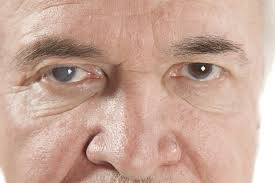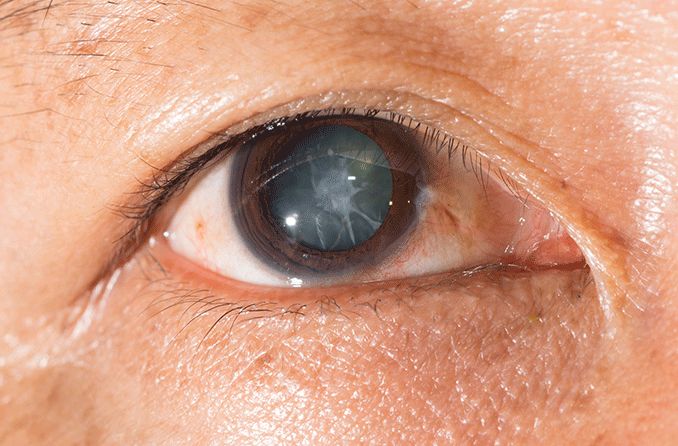A cataract is a clouding of the lens in the eye that affects vision. When a cataract develops, it can cause blurry vision and difficulty seeing colors and shapes. In some cases, a cataract can even lead to blindness. If you are experiencing any of these symptoms, it is important to see your doctor right away. In this blog post, we will discuss a traumatic cataract in more detail. We will talk about what causes them, how they are treated, and what you can do to prevent them from happening.
What Is A Traumatic Cataract?
 A traumatic cataract is described as a type of acquired cataract that forms following an injury to the eye. In most cases, the injury will cause a small break or tear in the lens capsule, which is the clear, flexible membrane that holds the lens in place. Over time, this break can allow proteins from the surrounding area to leak into the lens, causing it to become cloudy. In some cases, the injury may also cause the lens to change shape, which can further distort your vision.
A traumatic cataract is described as a type of acquired cataract that forms following an injury to the eye. In most cases, the injury will cause a small break or tear in the lens capsule, which is the clear, flexible membrane that holds the lens in place. Over time, this break can allow proteins from the surrounding area to leak into the lens, causing it to become cloudy. In some cases, the injury may also cause the lens to change shape, which can further distort your vision.
In simple words, a traumatic cataract is a clouding of the eye’s lens that occurs after an injury. That injury can be a blow to the eye, penetration of the eye by a foreign body, or other trauma. It is believed that about half of all cataracts are associated with trauma.
While a cataract can happen to anyone at any age, people who have had an injury to their eyes are at greater risk of developing a traumatic cataract. Additionally, the older you are, the more likely you are to develop a cataract. This is because the lens of your eye becomes less flexible as you age, making it more susceptible to injury.
Therefore if you are over the age of 40 and have experienced any sort of trauma to your eye, it’s important to see an ophthalmologist for a comprehensive eye exam. An ophthalmologist is a medical doctor who specializes in the diagnosis and treatment of eye diseases.
What Are The Types Of Traumatic Cataracts?
There are three types of traumatic cataracts:
Anterior capsular rupture
This is when the front part of the lens capsule is torn. Also called an anterior capsular tear, this type of cataract is the most common. For example, if you are hit in the eye with a baseball, the force of the impact can cause an anterior capsular rupture. Therefore, it is important to wear protective eyewear when participating in activities where there is a risk of eye injury.
Posterior capsular rupture
This is when the back part of the lens capsule is torn. A posterior capsular tear is less common than an anterior capsular rupture. It can happen if you are in a car accident or if you are hit in the eye with a hard object. As posterior is the Greek word for “behind,” a posterior capsular rupture is sometimes called a posterior capsular tear.
Lens dislocation
This is when the lens is pushed out of its normal position in the eye. Lens dislocation can happen if you are hit in the eye with a hard object. It can also happen if you have had surgery on your eye, such as cataract surgery. Also, this is the least common type of traumatic cataract. But can be the most serious, as it can lead to permanent vision loss.
So, these are the most common types of traumatic cataracts. A person with any of these types of cataracts should see an eye doctor right away. If you have a cataract, it is important to get it treated as soon as possible. The longer you wait, the worse it will get.
What Are The Symptoms Of Traumatic Cataracts?
 The symptoms of a traumatic cataract can vary depending on the type of injury. However, common symptoms include:
The symptoms of a traumatic cataract can vary depending on the type of injury. However, common symptoms include:
- Blurry vision
- Difficulty seeing at night
- Sensitivity to light
- Seeing flashes of light or floaters in your field of vision
- Discomfort and pain
- Redness in eyes
These symptoms can occur immediately after the injury or may not appear until months or even years later. Because of this, it is important to see an eye doctor as soon as possible after sustaining any type of eye injury.
Moreover, it is important to note that a traumatic cataract can occur in one or both eyes. If you experience any of the above symptoms in either eye, it is important to see an eye doctor right away. They will be able to properly diagnose the condition and create a treatment plan.
What Type Of Trauma Cause Cataracts?
Many different types of trauma can cause cataracts. Some common traumas include:
- Blunt or penetrating trauma to the eye: It is well known that any type of trauma to the eye, whether it be blunt (from a hit or fall) or penetrating (from a foreign body), can cause cataracts.
- Radiation therapy: Radiation therapy is commonly used to treat cancer, and unfortunately, it can also lead to the development of cataracts.
- Prolonged exposure to ultraviolet (UV) light: We all know that exposure to UV light can be harmful to our eyes, and one of the long-term effects is cataract development. Cataracts can also develop secondary to other eye diseases such as diabetic retinopathy, uveitis, and glaucoma.
- Surgical incisions: This occurs when the cataract surgery itself causes trauma to the eye, leading to the development of a cataract. This is, fortunately, a very rare complication.
- Diseases affecting the eye: Sometimes, underlying diseases or conditions can lead to the formation of cataracts. For example, diabetes is a well-known risk factor for cataracts.
- Electric shock: It is believed that electric shock can cause cataracts, although this is a very rare event.
Cataracts can also be congenital, which means that they are present at birth. These cataracts are usually small and do not typically affect vision. In some cases, though, congenital cataracts can be large and cause significant visual impairment.
Therefore, you should be aware of the different types of trauma that can cause cataracts so that you can take steps to prevent them. If you do develop a cataract, though, don’t worry! There are many treatment options available that can help improve your vision.
Other Risk Factors To Develop Traumatic Cataract
 As has been mentioned before, several risk factors can lead to the development of a traumatic cataract. Some of the risk factors include:
As has been mentioned before, several risk factors can lead to the development of a traumatic cataract. Some of the risk factors include:
- A family history of cataracts
- Exposure to ultraviolet (UV) light
- Diabetes
- Obesity
- Smoking
- High blood pressure
- Steroids for a long time
While some of these risk factors cannot be changed, others like smoking and exposure to UV light can be controlled. It is important to consult with an eye doctor to see what can be done to lower your risk of developing a cataract. Because this can be a serious problem if you ignore the risk factors.
Do Cataracts Always Need To Be Treated?
No, not all cataracts need to be treated. If your cataract is not causing you vision problems, you may not need treatment. However, if your cataract is impacting your quality of life or causing safety concerns, surgery may be recommended.
For example, if you have a cataract that makes it difficult to drive at night, you may want to consider surgery. Or, if you have a cataract that is making it difficult to see and you are at risk for falls, surgery may also be recommended.
Moreover, it is important to keep in mind that cataracts will continue to grow and eventually will need to be treated. Thus, it is important to discuss with your eye care professional whether surgery is right for you. In a traumatic cataract case, it is best to have the cataract removed as soon as possible to avoid any further damage to the eye.
As this is such a common surgery, there is no need to be worried. Your eye care professional will be able to walk you through the entire process and answer any questions that you may have.
Treatment Options For Traumatic Cataracts
 There are three primary treatment options for people who have developed a traumatic cataract:
There are three primary treatment options for people who have developed a traumatic cataract:
- Surgery to remove the cloudy lens and replace it with a clear artificial lens
- A course of steroids to help reduce inflammation and improve vision
- Surgery to repair the damage to the eye
Which option is best for you will depend on the severity of your cataract and the underlying cause of the injury. In most cases, surgery is the only way to effectively treat a traumatic cataract.
As surgery works to improve vision, it also carries with it a small risk of complications. The most common complication from cataract surgery is an infection, which can usually be treated with antibiotics. There is also a risk of bleeding, which can usually be controlled with medication.
The most effective treatment will be determined by your ophthalmologist. If you have suffered an injury to your eye, it is important to see an eye doctor as soon as possible to rule out a more serious condition. Early diagnosis and treatment of a traumatic cataract can help prevent vision loss and preserve your eyesight.
While a traumatic cataract can be a serious condition, it is important to remember that treatment is available and most people who undergo surgery experience a significant improvement in their vision.
Conclusion
To conclude, a traumatic cataract is a serious condition that can lead to severe visual impairment. It is usually caused by blunt trauma to the eye, such as a blow to the head. If you suspect that you or someone you know has a traumatic cataract, it is important to seek medical attention immediately. With prompt treatment, the prognosis for a full recovery is excellent.
There is always the possibility for a full visual recovery following surgery to remove the cataract. In some cases, however, vision may be permanently impaired. Therefore, it is important to take all necessary precautions to avoid injury to the eye. You can also contact Eye Mantra for more information and guidance on this topic.
At EyeMantra we have a team of experienced eye surgeons, who will be happy to answer your questions on cataract surgery, cataract surgery cost, and cataract lens cost for different cataract surgery types- Phacoemulsification, MICS & Femto Laser Cataract. Call us at +91-9711116605 or email at [email protected] for inquiries.


